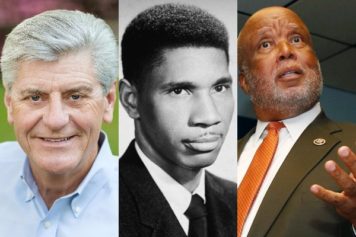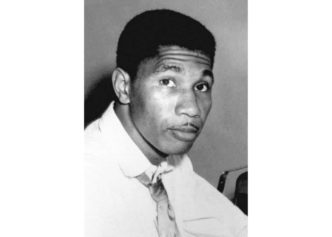
In perhaps the tensest racial climate the country has seen in decades, when angry crowds of protesters still stream through American streets demonstrating police killings of unarmed Black men, and a Black men randomly kills two New York City police officers, it would seem that there would be significant interest in the meaning behind an attack on the NAACP.
There have been at least a dozen serious attacks on the NAACP since its founding in 1909, often initiated by members of the KKK, with several of them resulting in deaths—such as the bomb that killed Florida NAACP field secretary Harry T. Moore and his wife on Christmas night in 1951 (the bomb was placed under their bed) and the assassination of Mississippi field secretary Medgar Evers in 1963.
Maybe the fact that the Colorado Springs bomb didn’t kill anyone, just causing minor damage to the one-story Colorado headquarters of the group, dissuaded some media outlets from covering the story—particularly as the media’s interest was drawn to the gruesome terrorist massacre of the Charlie Hebdo magazine employees in Paris.
But considering the racial turmoil in the U.S., it would seem that an attempt by a white man to make some sort of violent racial statement would garner more attention. As noted by Arit John of Bloomberg News, most of the mainstream media outlets initially ignored the story, forcing most people to hear about the bombing through social media.
On Wednesday, Georgia Congressman John Lewis, who was deeply involved in the civil rights movement and witnessed much of the violence first-hand, said this in a tweet: “I am deeply troubled by the bombing in Colorado. It reminds me of another period. These stories cannot be swept under the rug #NAACPBombing”
Government officials held a news conference yesterday in Colorado Springs where they indicated that their investigation is still in the early stages. The FBI even refused to speculate on the motive for the crude bomb, saying it could have been meant for the barbershop next door to the NAACP building—though Gene Southerland, the owner of Mr. G’s Hair Design Studio, amusingly has been quoted in the media stating that the bomb couldn’t have been meant for him because “Everybody loves me.”
“I’m not going to be naive, I know what the NAACP means to some extremists in this country,” said FBI Special Agent in Charge Thomas Ravenelle, the only official to speak at Friday’s media briefing, according to the Denver Post.
The balding white man pictured in the sketch was seen leaving something at the scene just before the device went off. FBI officials are asking for anyone with information to call 303-425-7787. If the information leads to an arrest, the tipster would receive $10,000.
The Post said the news conference was attended by representatives from the FBI, the Bureau of Alcohol, Tobacco, Firearms and Explosives, Colorado Springs police, Fountain police and the El Paso County Sheriff’s Office.
“We’ve gotten some tips, but I wouldn’t say it’s a large amount of tips,” Ravenelle said. “We’re definitely looking for the public’s help.”
There was a gas can next to the incendiary device but it failed to go off, minimizing the damage—though Ravenelle said even if the gas can had ignited, it probably wouldn’t have caused a significant amount of further damage.
“This type of criminal act is unacceptable,” Steve Bach, mayor of Colorado Springs, said in a statement Thursday. “I expect that law enforcement will work together to solve this crime and bring the responsible individual to justice. There is no place for this type of activity in our city.”
Officials describe the suspect as possibly driving a 2000 or older dirty, white pickup truck with paneling, a dark-colored bed liner, open tailgate and a missing or covered license plate.


